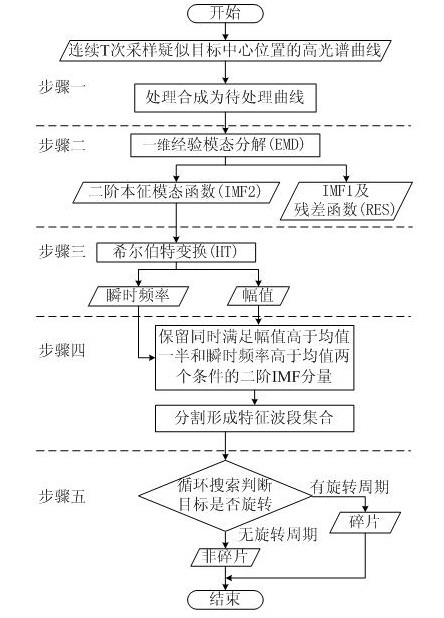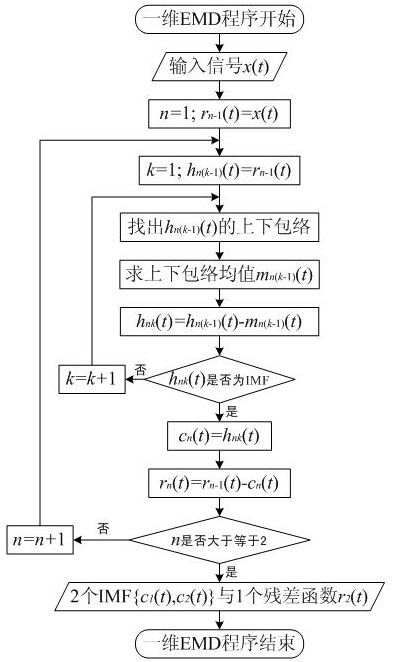Space debris hyperspectral sequence detection method based on Hilbert-Huang transform
A space debris and detection method technology, applied in the field of image processing, can solve the problems of poor algorithm adaptability, space debris spin motion of space-based visible light cameras, etc., and achieve the effect of strong algorithm adaptability
- Summary
- Abstract
- Description
- Claims
- Application Information
AI Technical Summary
Problems solved by technology
Method used
Image
Examples
specific Embodiment approach 1
[0023] Specific implementation mode one: the following combination figure 1 and figure 2 To describe this embodiment,
[0024] In 1998, NASA's Norden E Huang proposed a new algorithm for decomposing signals based on the time scale characteristics of the data itself - Hilbert-Huang Transform (HHT). Among them, Empirical Mode Decomposition (EMD) is the core step of the HHT algorithm. It uses the change of the internal time scale of the signal to analyze the energy and frequency, and expands the signal into several Intrinsic Mode Functions (Intrinsic Mode Function, IMF), and then use the Hilbert Transform (HT) to obtain the instantaneous frequency and amplitude of the IMF, and finally obtain the three-dimensional spectral distribution of time-frequency-amplitude, that is, the Hilbert spectrum.
[0025] Among them, the IMF must meet the following conditions:
[0026] 1) In the entire function, the number of extreme points is equal to or differs from the number of crossing zero...
specific Embodiment approach 2
[0082] Specific implementation mode two, the following summary Figure 1 to Figure 9 , combined with a hyperspectral rotation imaging sequence of a certain space debris model, a specific embodiment is given:
[0083] Step 1: Select multiple continuous hyperspectral data sequences of the target pixel at the center of the observed object for data synthesis to form a curve to be processed.
[0084] For 20 pieces of hyperspectral data collected continuously, call the hyperspectral curve of the pixel at the center of the target (a total of 20 segments, each segment length m is 220), then flip each segment of the hyperspectral curve left and right, and connect it after the original spectral curve , to form a new hyperspectral curve (a total of 20 segments, each with a length of 2m=440), and finally connect the 20 new spectral curves in turn to obtain a synthetic curve as the curve to be processed (such as image 3 shown, length =8800) as the one-dimensional input spectral data fo...
PUM
 Login to View More
Login to View More Abstract
Description
Claims
Application Information
 Login to View More
Login to View More - R&D
- Intellectual Property
- Life Sciences
- Materials
- Tech Scout
- Unparalleled Data Quality
- Higher Quality Content
- 60% Fewer Hallucinations
Browse by: Latest US Patents, China's latest patents, Technical Efficacy Thesaurus, Application Domain, Technology Topic, Popular Technical Reports.
© 2025 PatSnap. All rights reserved.Legal|Privacy policy|Modern Slavery Act Transparency Statement|Sitemap|About US| Contact US: help@patsnap.com



